“Miss Neighbor Lady” Kathy Mouacheupao hosts “Gatherings” in her St. Paul neighborhood
Kathy Mouacheupao has worked in arts-based nonprofits her entire professional career, working as the Executive Director for the Center for Hmong Arts and Talent in Saint Paul for ten years and as Program Officer for Creative Placemaking with Local Initiatives Support Corporation (LISC) for the past four, in addition to serving on boards and advisory panels for the Hmong Museum of Minnesota, the Metropolitan Regional Arts Council, Springboard for the Arts, Shades of Yellow, and the City of Saint Paul, among others.
As a long-time “arts administrator,” she sees her own role as one of facilitation and collaboration, working together with artists but understanding her own work as more social practice.
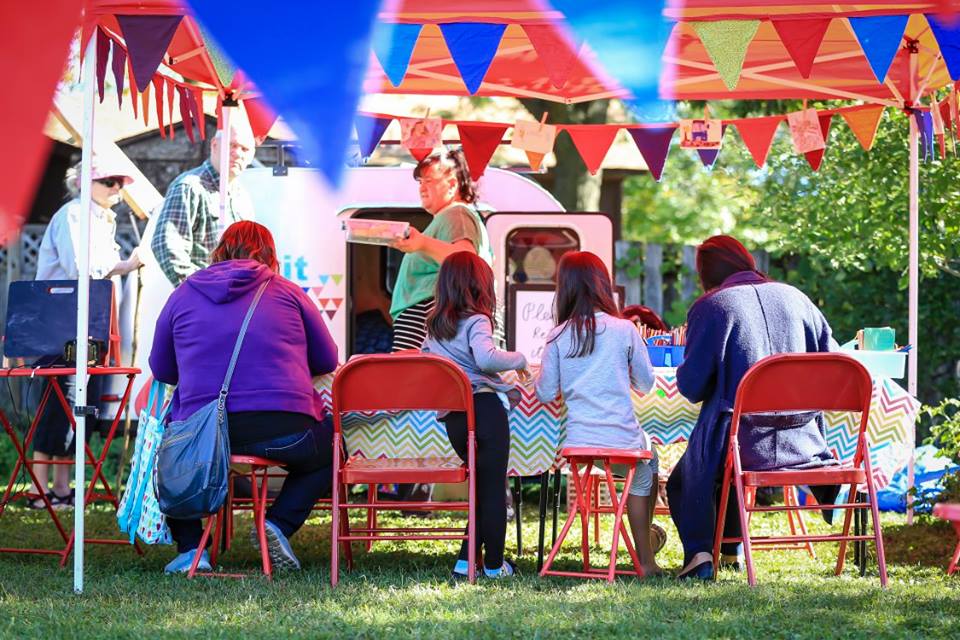
Her current project is “The Gathering,” a series of food-centered art events held in community gardens throughout her neighborhood of Rondo in Saint Paul.
Rondo is a neighborhood with a history all too familiar to once-thriving Black communities in mid-twentieth-century America: it was effectively bulldozed for a highway. This happened in cities from Los Angeles to New York, Miami to Seattle. It happened in Charlotte, in Baltimore, in Detroit. And it happened here, in Saint Paul.
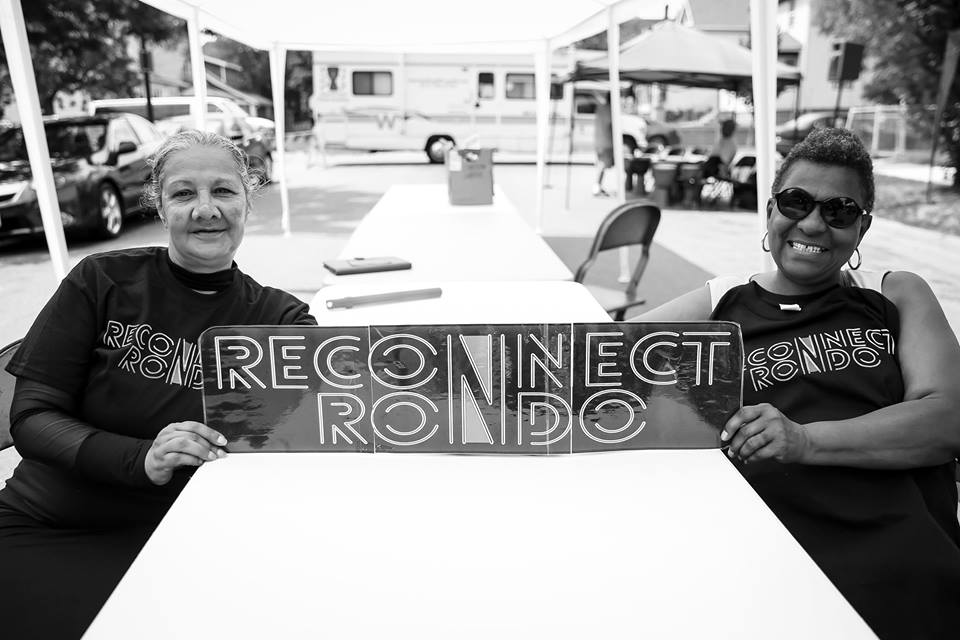
The construction of these highways not only decimated predominantly Black neighborhoods; it also helped to feed cyclical poverty in minority and low-income communities. The ramifications of this still exist to this day, with city planners just now trying to rectify a catastrophic decades-old error rooted in overtly racist pre-Civil Rights public policy.
Rondo is still a primarily low-income neighborhood of people of color. It is a part of town people “don’t speak highly of,” an area associated with poverty and violence.
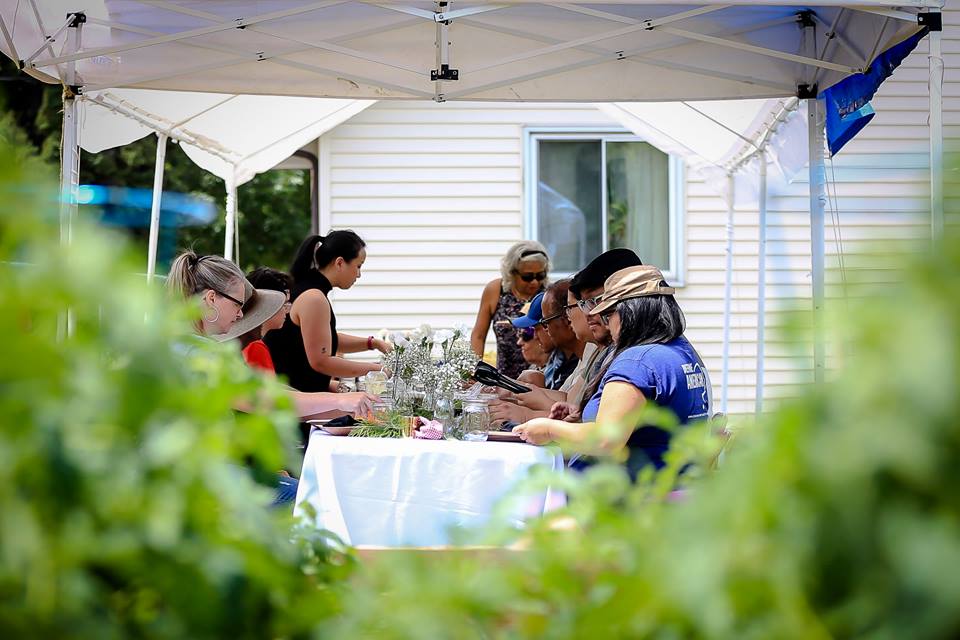
Mouacheupao moved to Rondo four years ago. She remembers her first interactions with her neighbors involved kids in the neighborhood referring to her as “the Chinese Lady.” She would correct them – she is Hmong, not Chinese – and talk to them, and just last year these kids began calling her “Miss Neighbor Lady” instead. She has wanted to do a project in this neighborhood ever since, based off of these interactions she had with the neighborhood kids.
She wanted to find a way to engage more with her neighbors, she says. Mouacheupao knew of several community gardens around Rondo built and maintained by the Urban Farm and Garden Alliance, including the “Peace Garden” half a block away from her house. She jokes that it was the first time in her life she planted garlic and it actually grew out of the ground, and that was a “magical moment.”
“But,” she says, “if you’re not a gardener you don’t really know how to interact with these spaces.”
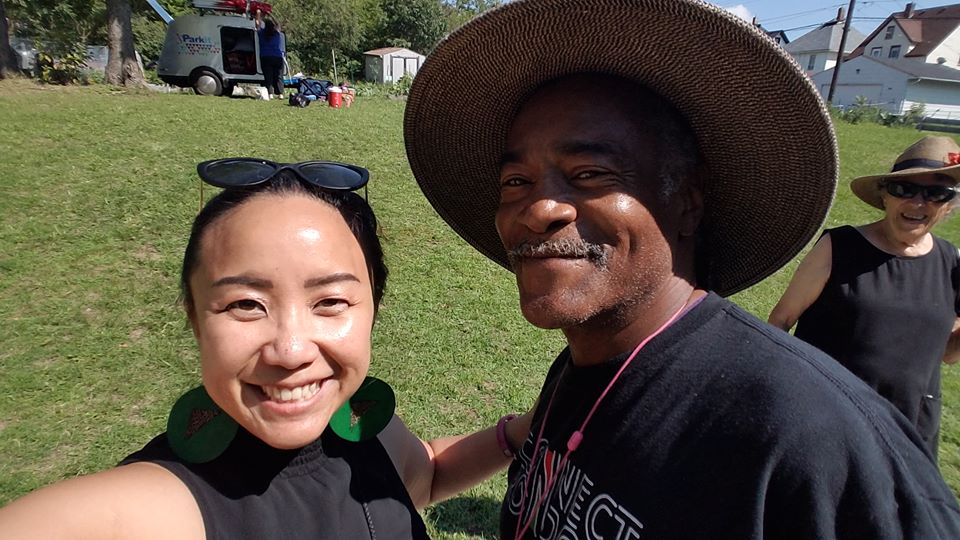
She reached out to Melvin Giles, who runs the Peace Garden and considers himself a peacemaker. She asked him how he felt about hosting community meals led by artists in the gardens and he was all for it. She applied to the Center for Regional and Urban Affairs annual grant, Artist Neighborhood Partnership Initiative, which supports artists to do projects in their neighborhoods, and was awarded a small grant.
This year, she held five “Gathering” events throughout the summer, each in a different garden with a different artist lead. Mouacheupao has since won a Knight Arts Challenge Grant, which will allow her to continue hosting “Gatherings” in 2018.
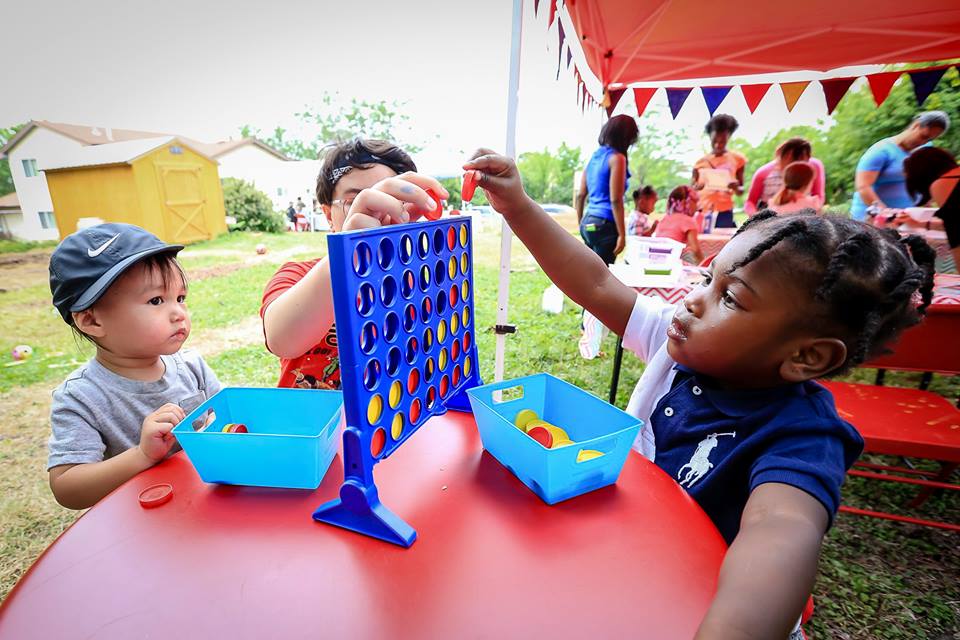
“Every garden has a different character about it already because of the people there and where it’s placed in the neighborhood,” she says. “Every garden has a different layout, the setup is different, and there is whatever activity the artist brings.”
The first Gathering was done in conjunction with National Night Out. There was “a programmatic piece to it,” Mouacheupao says, with a table set for 30 on an open lot where a house had once stood before it burned down. The lot was not yet a garden, but the new owner’s plan was to turn it into one. Though Mouacheupao was worrying over worst-case scenarios – “What if only two people show up?” – 50 people came out, and despite the table being set for only 30, it was “perfectly filled” once they all sat down. People then shared their stories in connection to that space and the home that burned down, creating connections between them through this piece of land.
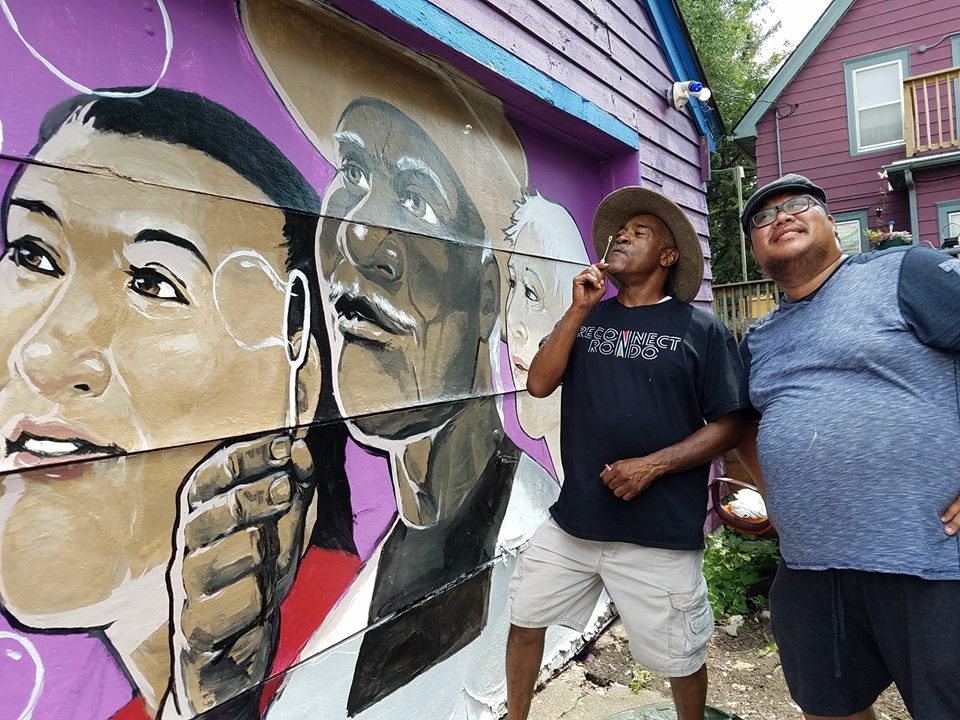 Melvin Giles with Thao Vang. Photo by Thaiphy Phan-Quang.
Melvin Giles with Thao Vang. Photo by Thaiphy Phan-Quang.
The next event was held in Giles’s Peace Garden. Giles is a respected elder in the community, who can be seen around the neighborhood blowing bubbles everywhere he goes – something he started doing because he thought bubbles would make him less intimidating to police officers. He is fond of saying, “Bubbles, not bullets,” so the artist lead on his garden’s event, muralist Thao Vang, led the community in painting a mural that wraps around a garage, showing Giles and others blowing bubbles that participants then painted.
Another event featured Ready Go mobile artist Soozin Hirschmugl, who brought games and coloring projects. Though they were all very different events, Mouacheupao made sure they had one thing in common.
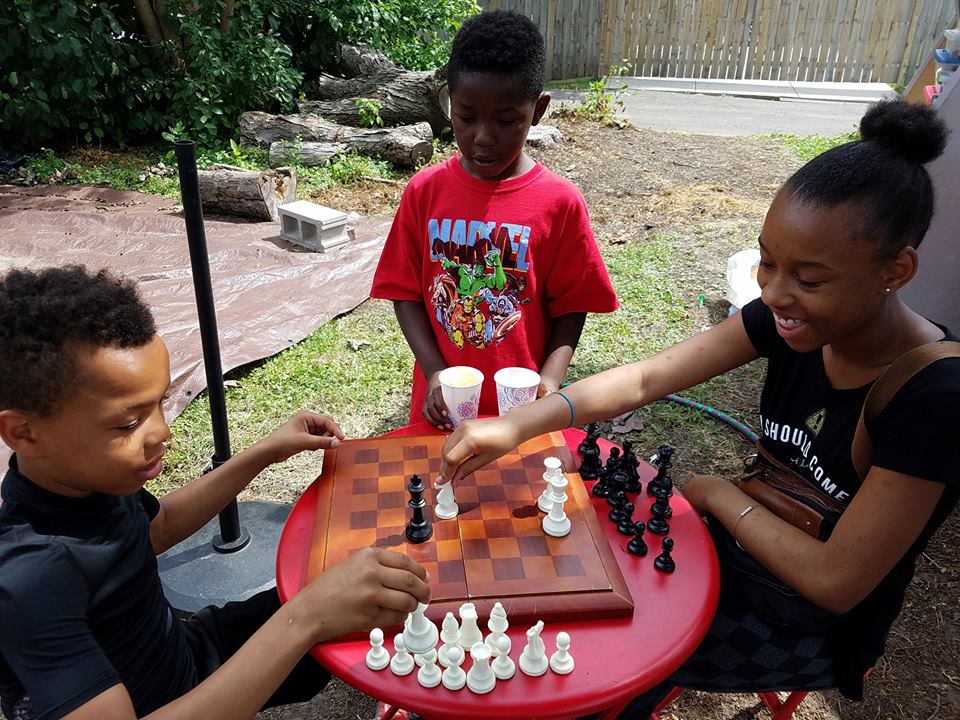
“I wanted these to be low pressure events and not resource fairs,” she says. “At the heart of this was getting people in our neighborhood that don’t actually talk to each other to get together and share space together, to eat together and make art or see art. I don’t want anybody there with a clipboard because there are so many events like that everywhere we go these days, there’s people trying to push opinions on you, and that’s part of the reason I wanted to do this, because our neighborhood is already so fragmented. People are poor. They have hard lives. There’s also not a lot of reason for people to talk to each other. I noticed just saying ‘hi’ to people, I would see their posture change with something as simple as that. The Gathering is about ‘Our Neighborhood, Our Stories.’ We’re sharing space so we can share our narratives. Once we know each other’s names, then we can talk Boy Scouts or whatever.”
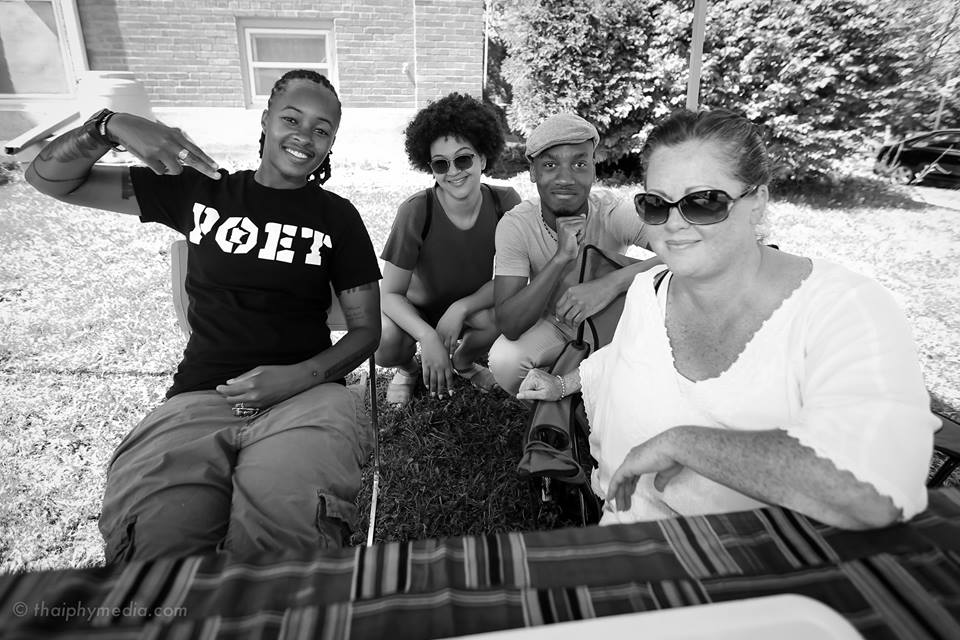
She says everything was “super grassroots” – she and her team hand-made the invitations and personally went knocking on doors to invite people to come. She remembers one person, a Black man in his mid-30s with tattoos on this face who was on his front porch smoking as she came walking up to invite him. On the day of the event, he showed up right at the start time with his nieces and daughter, then kept leaving and coming back with more people. Later he said to her, “I really want to thank you because people are usually scared to come talk to me. I’m really down for this movement.” She remembers thinking, “Oh it’s a movement now!”
“In neighborhoods where there’s high crime, and they’re primarily low income and primarily people of color, it gets super fragmented. We can’t build power unless we get to know each other. There has been a lot of community building among artists, garden leads, and people doing things in the neighborhood. Getting neighbors to come out where we can create space for new people to get to know each other creates a greater sense of safety and power in the neighborhood, for me at least.”
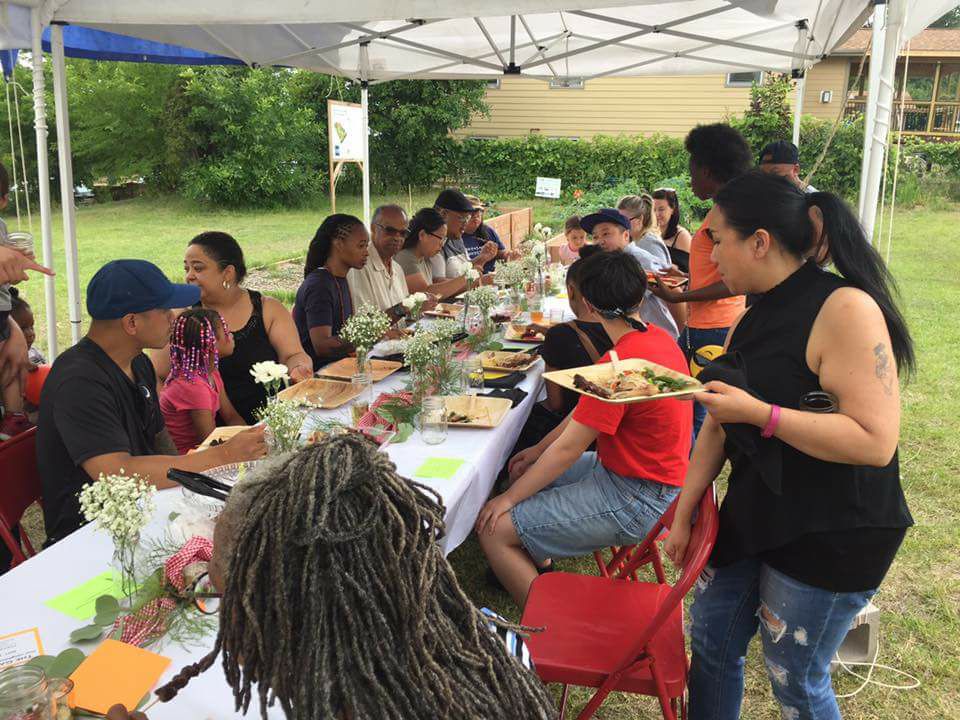
Mouacheupao says with the Knight Arts Challenge grant she will continue doing this next year, working with some different artists and possibly different gardens with the Urban Farm and Garden Alliance. She says the structure and guiding principles will remain the same; she just hopes to “do it better.” Each event has drawn in about 50 people, which was more than she anticipated. Sometimes the experience has been really great and magical, she says, and other times it has been awkward and uncomfortable. Regardless, it has been worthwhile.
“It was a lot of work but it wasn’t hard, and the payoff has been so worth the many hours and labor,” says Mouacheupao. “It just felt so important to talk to my neighbors. It feels so important to have spaces where people don’t have to worry too much about things. I don’t want to over-romanticize it: it does take a little bit of effort, but that’s all it takes to get to know your neighbors and create a feeling of safety, to go from ‘the Chinese Lady’ to ‘Miss Neighbor Lady.’ It’s small but it’s progressive, and it feels good.”

(1) How do you like to collaborate?
I have a million ideas. I shared the idea [for the Gathering] and I really allowed the artists to do whatever they wanted, to co-create or collaborate in a way where everybody is still enjoying themselves and are actually being creative and not restricted. I think it’s really important that the broad idea gets established and then we can figure out details together. I like to stay open. I like to talk over food. I’m still learning, too. All these relationships are still building and developing. The only thing I was really strict about is not having people “table.”
(2) How do you a start a project?
I usually start projects with wanting something really awesome to happen in my community. This project in particular, I don’t want to over intellectualize it but there was more gun violence in this neighborhood this summer than in all of history. With this issue [I was asking], what is the root cause of all this? What’s causing this fragmented brokenness within the community and what are some ways we can do something about it? It starts with something I care deeply about, then identifying artists to work with. It really starts with a community need then finding a good team to make things happen.
(3) How do you talk about your value?
This whole project has been so based on values, this is not about pushing our opinions on each other – just sharing space with each other in a very human way [and then people can see] “Okay, you’re not a complete stranger anymore.” It’s that simple. I think that it’s simple but it’s also something that’s taken for granted and also something people don’t take the time to do anymore. It’s so easy to turn these events into something that they’re not and make them way bigger than they have to be and it’s not about that. I kept reminding artists this is not the State Fair; we don’t need a Facebook invite. We want to go deeper, not wider. We want people to linger longer. We want people to come and experience something they can’t otherwise. We have a limited budget and can’t feed 100 people if they show up anyway.
(4) How do you define success?
Every time I meet a new person. Every single time there are these new relationships that happen and I know it’s not just me, I see it happen throughout the entire garden – people come and everybody looks happy. That feels successful.
(5) How do you fund your work?
So far it’s been through grants. This project was a $15,000 grant. I only paid myself $1,800, everything else went to the artists and the food and other expenses. I almost hesitate to say this, and I don’t think artists should do this all the time, but I would have done this for free. I just wanted money to pay the artists and cover expenses. But most of my career has been in nonprofits, so it’s a complex I’m used to.

Thank you “Miss Neighbor Lady”. You are the best. And playing alongside you may be effort expended, but it isn’t “work” in the usual sense of the word. I truly hope to keep on keepin’ on with you for as long as I possibly can. <3